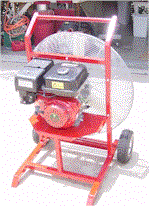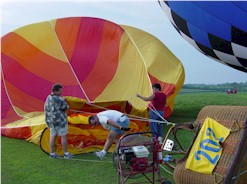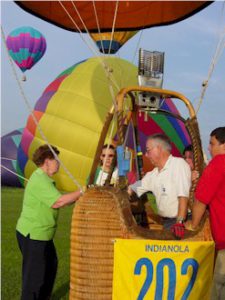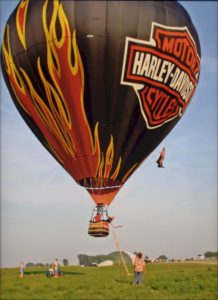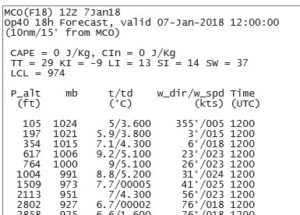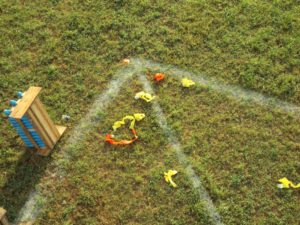About the Aircraft.
HEY! Guess what? A hot air balloon is an actual FAA certified AIRCRAFT and you are required to have an FAA Pilots License to fly one! "Didn't know that did-ya?" We hope you enjoy this educational tutorial about a Hot Air Balloon and the things that go into a flight with one.
Here is how the aircraft works.
Heating air will cause the molecules to spread apart. When the molecules spread the density of the air becomes less. Heat the air some more and it becomes lighter still. This is what we call "LIFT". 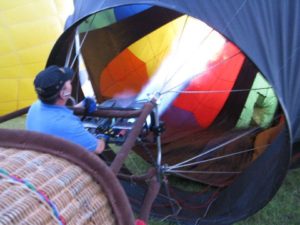
The amount of weight you can LIFT is determined by two things.
1. The amount of air. (more commonly referred to as the Volume)
2. The amount of heat you apply to that air.
Lets look at the second rule first. The limit of heat is determined by the fabric used to make the balloon. You can only heat the fabric to a certain temperature before you cause damage to the fabric. If you want to carry more weight you must have a balloon that holds more air.
This brings us to rule #1. To lift more weight you need a larger balloon. Hot air balloons come in different sizes. (Just like cars do) The size of the balloon determines the number of people it will carry.
The Fabric part of the balloon is called the Envelope. The Basket is referred to as the Gondola (gone-DOH-la) or (the bottom end). The bottom fake rolex automatic end includes the burners, basket, flight instruments and the fuel tanks. Everything that goes at the Bottom End of the balloon.
The bottom end is matched in size to the envelope. In other words a 4 passenger balloon will have a smaller gondola and envelope than a balloon that holds 8 passengers. Generally, the size of balloon used is determined by the number of people needed to be flown on that day.
SO FAR,
 We have learned the terms Gondola, Bottom End, Envelope, and Volume. Volume in a balloon is determined in Cubic Feet. An average sport balloon is around 65,000 cu.ft. A passenger ride balloon can be anywhere between 90,000cu.ft. to 240,000cu.ft. Yes up to 4 times as big, as the size of a personal sport balloon.
We have learned the terms Gondola, Bottom End, Envelope, and Volume. Volume in a balloon is determined in Cubic Feet. An average sport balloon is around 65,000 cu.ft. A passenger ride balloon can be anywhere between 90,000cu.ft. to 240,000cu.ft. Yes up to 4 times as big, as the size of a personal sport balloon.
About the Aircraft. (Section TWO)
So, How do we get one in the air?
First thing we will need is a place to launch our balloon. We are going to need a large field to lay out the balloon. Field?? Wait... What field where???
Where we begin, determines greatly where we will land. Balloons only go with the wind so it would be a good idea to start upwind of someplace to land because we will have to land sometime! We will explain more about this when you come and fly with us. But for now lets just say we have a launch field.
Now we must assemble the aircraft. We have to connect the envelope to the bottom end.
Now that we have the envelope hooked to the bottom end it is time to inflate the balloon. No we just cant turn on the burners and go. We would melt large holes in our balloon and then we would be leaking hot air all over the sky and that would not be pretty. We need a really big fan. We use the fan to fill the balloon with air. Once the envelope is filled with air we can use the burners to heat the air. This will make the balloon stand up.
Once the balloon is upright we have a few final flight checks and we are on our way.
Commercial passenger carrying balloons are more commonly referred to as Ride Balloons. The Thompson Aire ride balloons are equipped with Twin Burners. These burners are amazingly powerful and efficient. Each burner is rated at 15,000,000 BTU. Yes that is fifteen MILLION. On
e burner has the same power as 120 home furnaces going full blast. No you wont be cold in a HOT air balloon... Each burner has its own fuel supply and a pilot can fly the balloon with either or both burners quite easily. This is just one of the redundant safety features of a modern hot air balloon.
Lets talk about the instruments onboard. The FAA requires each balloon to have three basic instruments onboard each flight.
-
One, is a VSI Or a Variometer. VSI stands for Vertical Speed Indicator. This tells the pilot if he is going up or down and how fast. This instrument comes in quite handy.
-
Two, is an altimeter. This is provided by the manufacture of the balloon and can also be set to indicate barometric pressure.
-
Three, is a temperature gauge. This indicates the internal temperature of the top of the balloon. Remember you can only heat the air so much before you begin to damage the fabric.
So you think you're ready to fly???
Not YET!!!
There are other items the pilots may need and carry on board.
- A Radio to talk to the ground crew.
- A GPS to track flight path and speed
- Igniters to re-light the burners
- Drop line
- Maps
- Gloves
- Wrenches
- Spare Batteries
Ok Now we are ready for liftoff. But how do you fly these things after all?
So, We are now ready to go aloft!!! Wooo Huuu..
How do you actually control one of these magnificent flying machines?
In reality we have more control than you would first think. Would you believe that a fairly seasoned pilot can actually fly down to the ground and knock over a cup of coffee and not touch the ground?
Believe it or not, Yes we can!!!
One of the things you need to keep in mind while you're floating along in what most people describe as "absolute peaceful bliss", is that the balloon is cooling off. Just like your dinner on the table, in 10 minutes it will be cold. Same thing applies to your balloon. It is cooling down and wants to fall from the sky. SO.,,,, To keep this from happening we will have to give it a little toot on the burners now and then to stay aloft.
If we give the balloon just the right amount of heat it will fly perfectly level. A little more heat than it needs and it will begin to climb. Heat the balloon a little less and it will begin to descend. Sounds simple right? OK Lets throw in a few little screwballs to make it more interesting.
First. There is a delay in the response of the burners. Yepper. It is going to take a little time before that blast of heat you just put into the balloon starts to take effect.
Second. As you change your altitude your balloon will go in a different direction and most likely a different speed.
Sound like it is getting fun yet? That is why you need a PILOTS License to fly one of these things..
Ok... Lets talk about the delay first. It takes time for the heat to effect the balloon. Even when 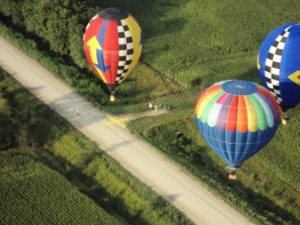 it does take effect it will only begin to work it's magic. Think of it this way. When you're driving your car and you hit the brakes are you stopped? Nope.. Not right away. You have to keep your foot on the brakes and slow the car down to a full stop. Same happens in the balloon. If you are falling and you turn on the burner it will take a few seconds before the balloon STARTS to slow down. It may take several more seconds to stop that decent completely.
it does take effect it will only begin to work it's magic. Think of it this way. When you're driving your car and you hit the brakes are you stopped? Nope.. Not right away. You have to keep your foot on the brakes and slow the car down to a full stop. Same happens in the balloon. If you are falling and you turn on the burner it will take a few seconds before the balloon STARTS to slow down. It may take several more seconds to stop that decent completely.
To add more excitement to the mix each balloon responds differently each time you fly it. The balloon responds differently depending upon the temperature outside and the weight load on board as well as many other factors.
What the heck, let's make it even more tricky keeping in mind that we are burning fuel while we fly so the aircraft weight will keep changing......So at the end of the flight it responds differently than when you started!!
Getting a little nervous? Don't worry your pretty little head over all this. Captain Thompson is one of the best in the United States. In his lifetime he has finished in the top 10 over 90% of the events he has competed in. He has competed with some of the absolute legends in the world of ballooning.
*Bruce Comstock, David Schafer David Levin, Sid Cutter, Paul Woesner, Don Cameron and many of the pioneers of the balloon world.
Four of the above six balloonists are in the BFA Ballooning Hall of Fame.
